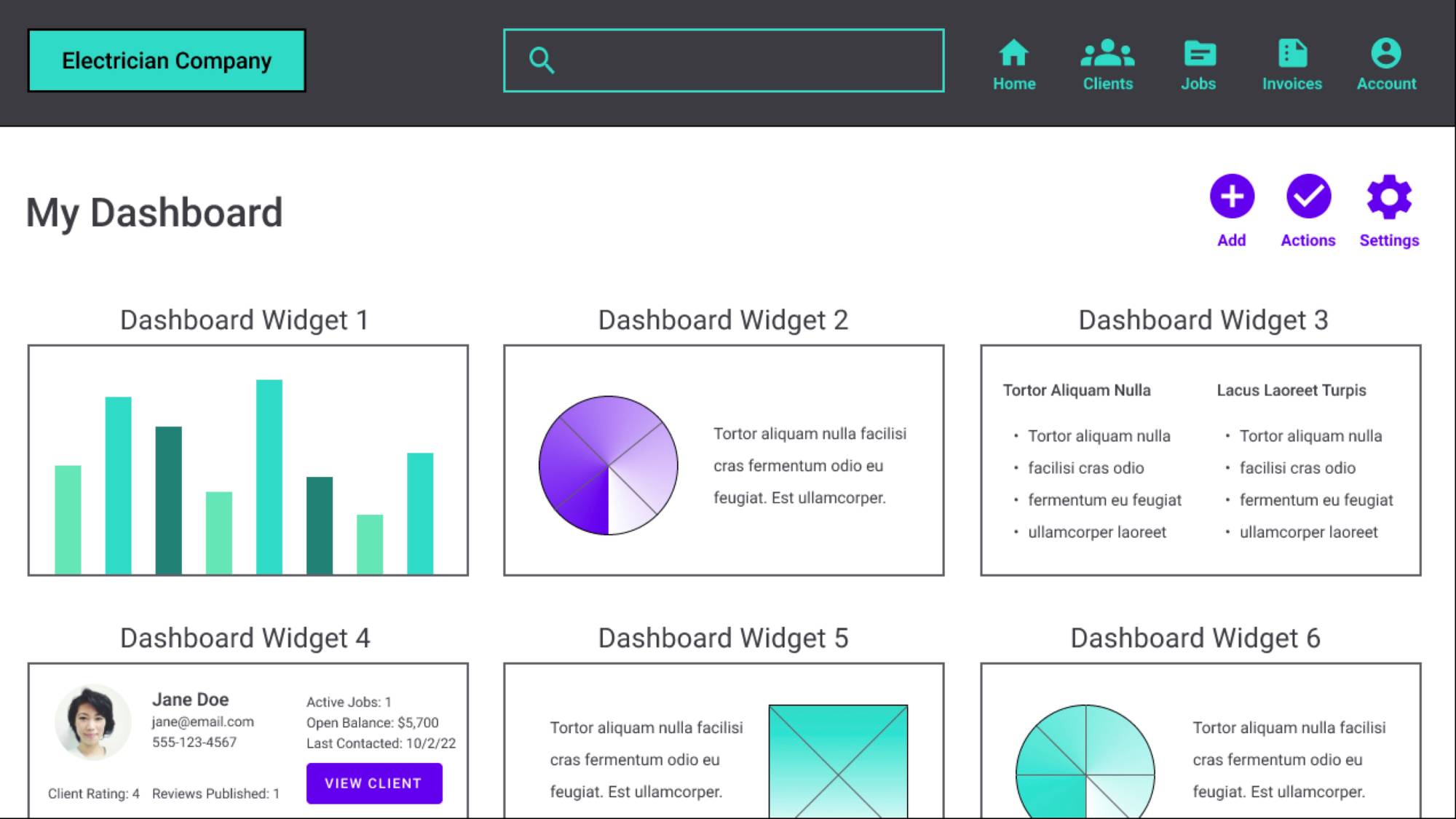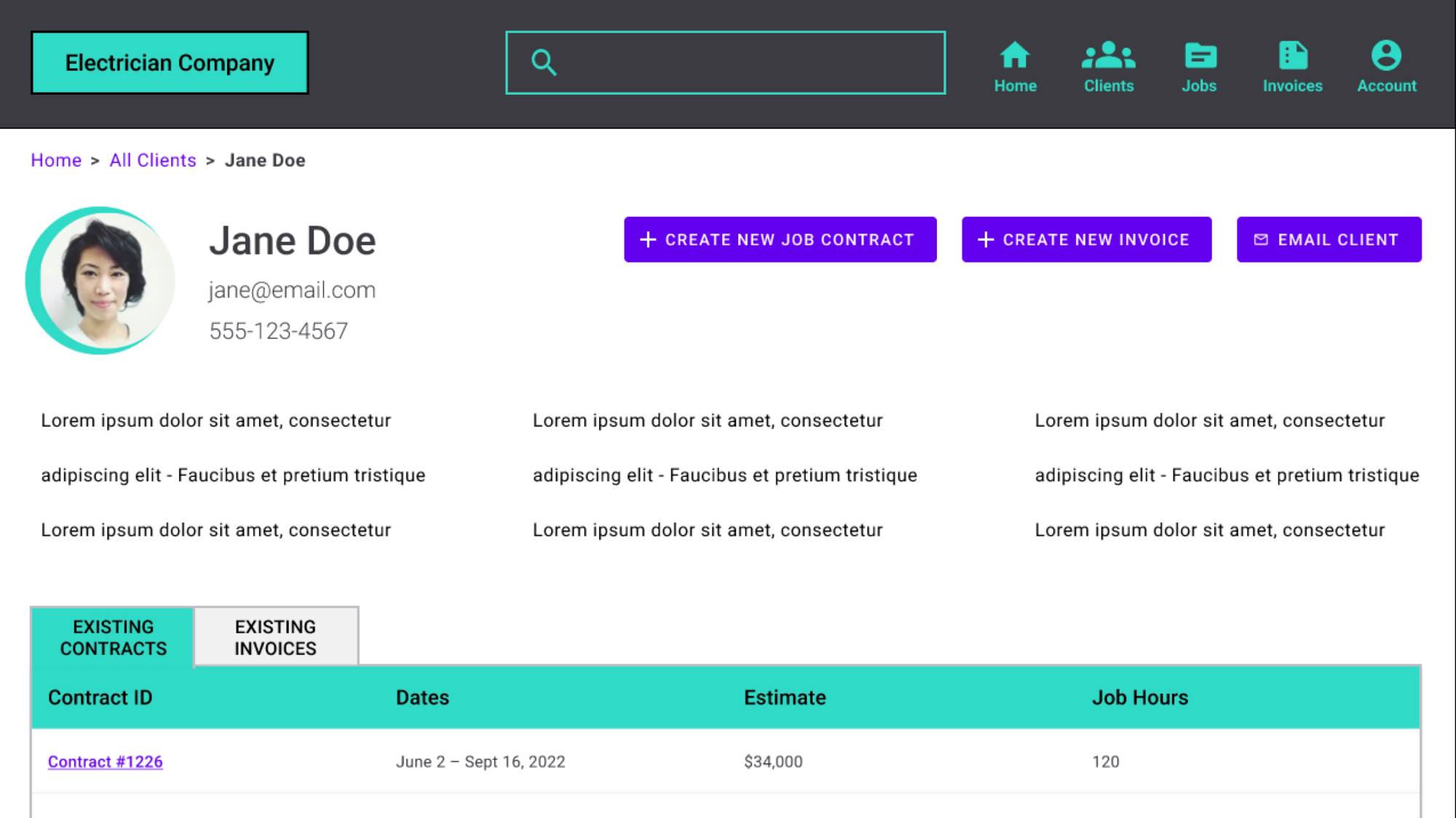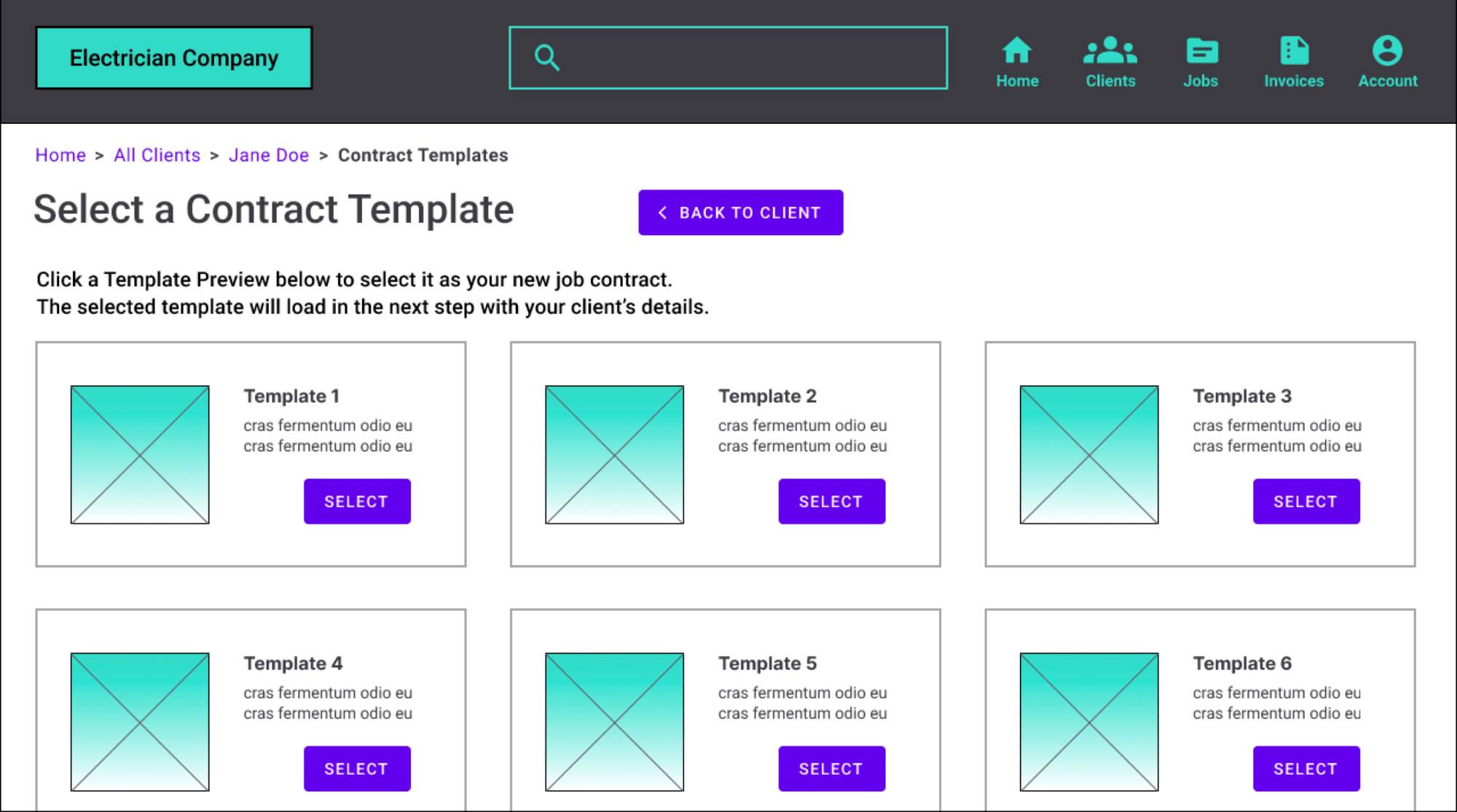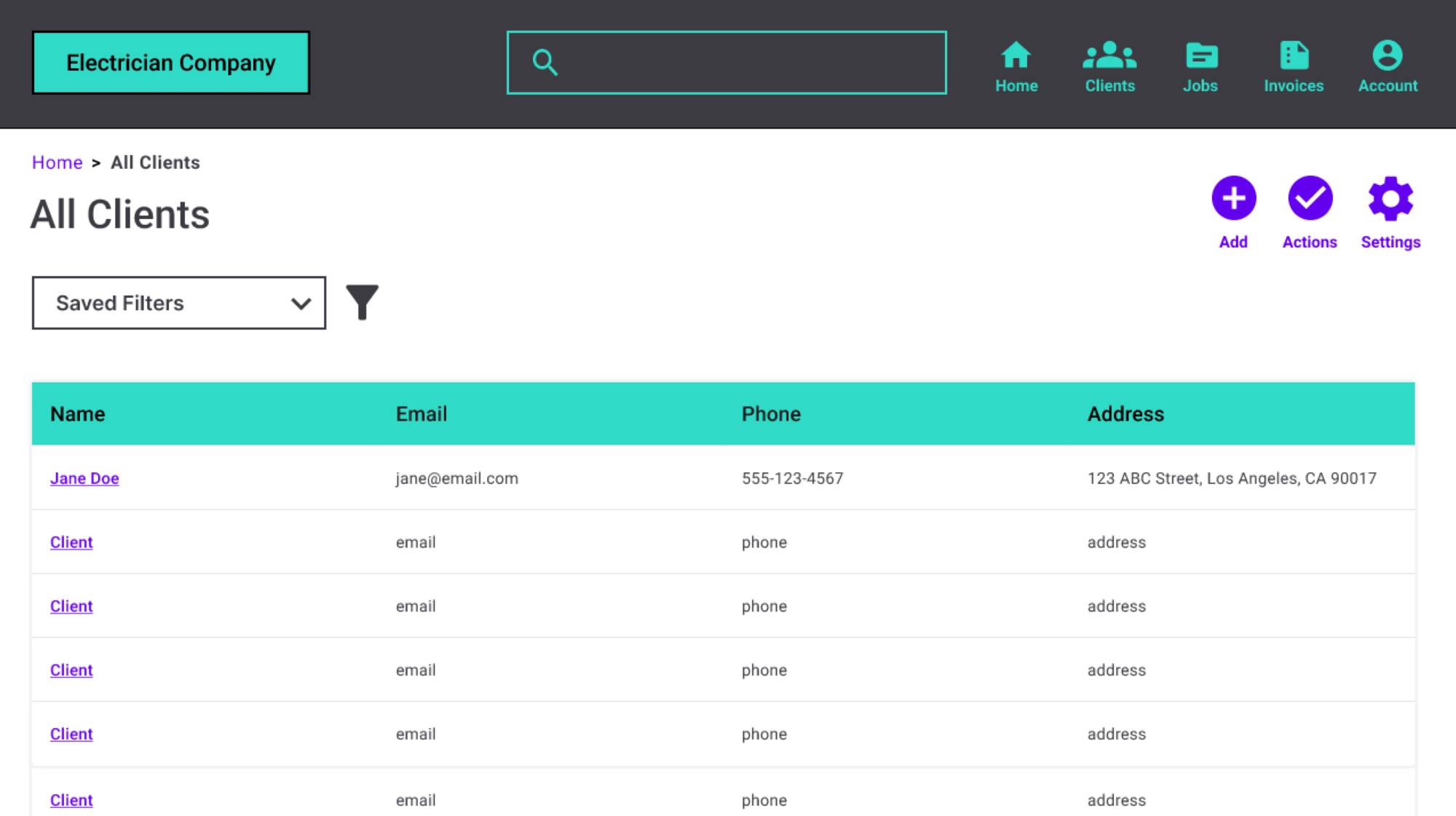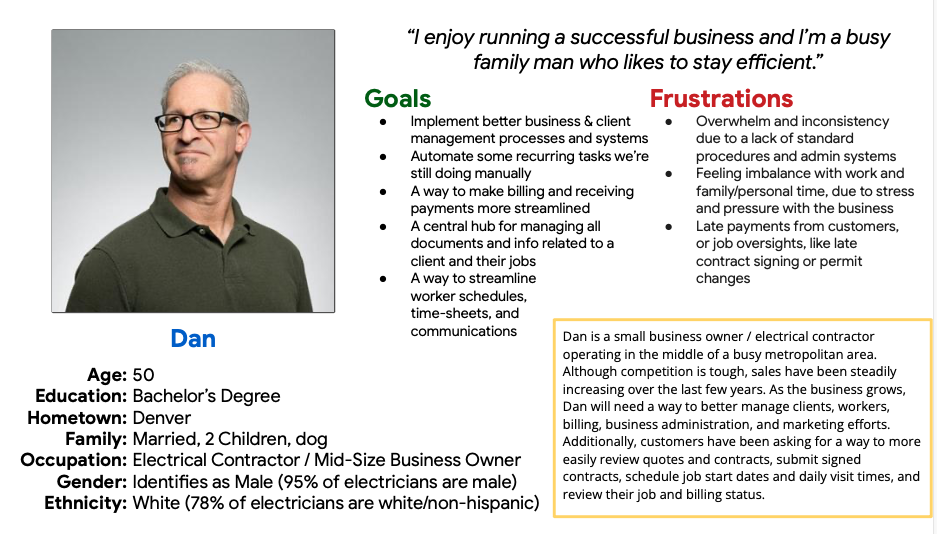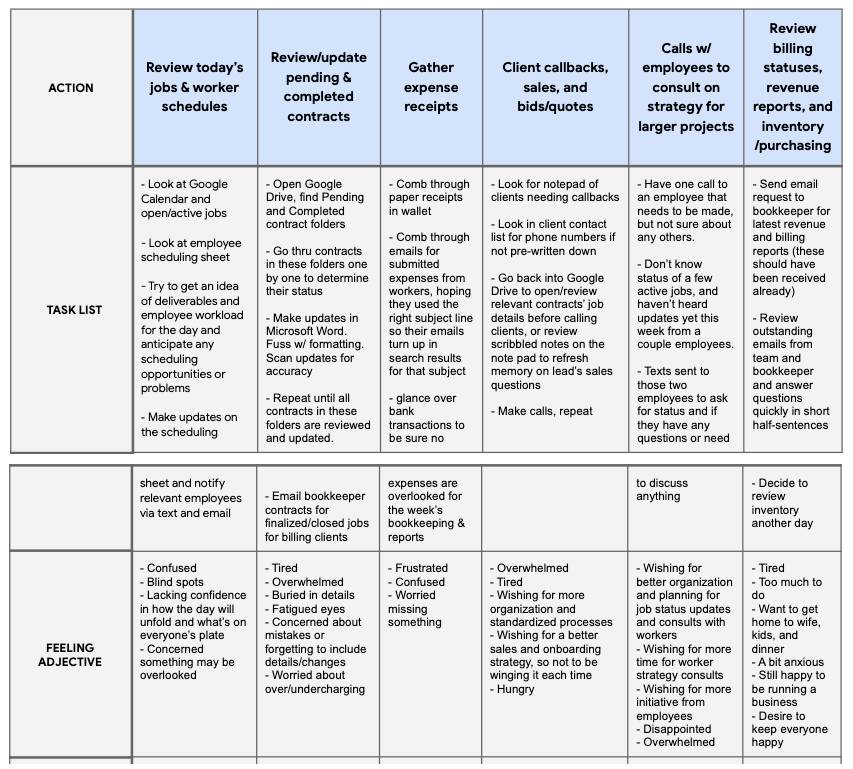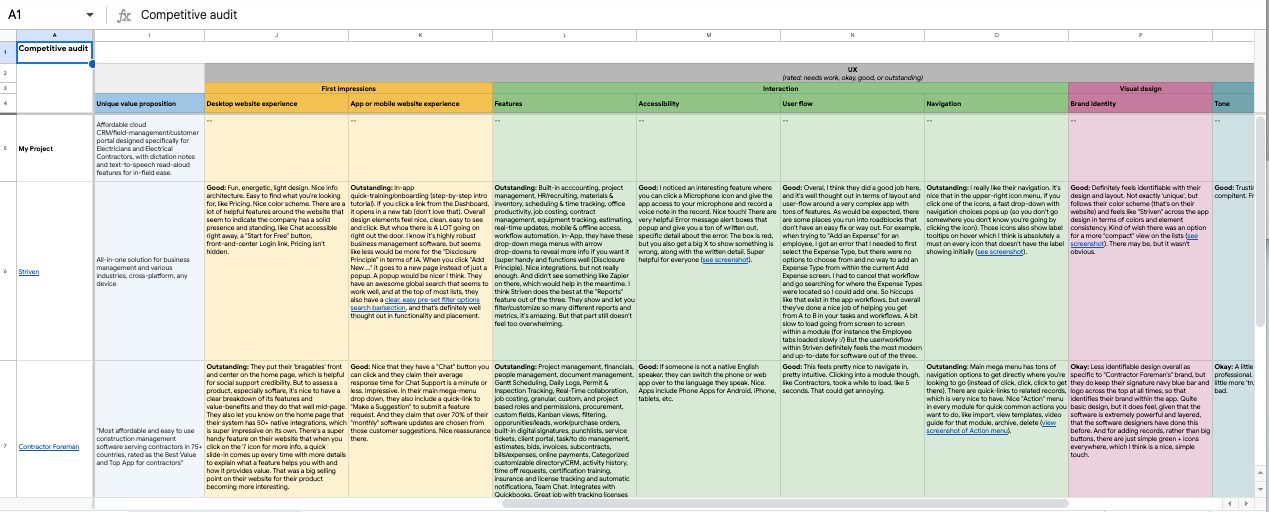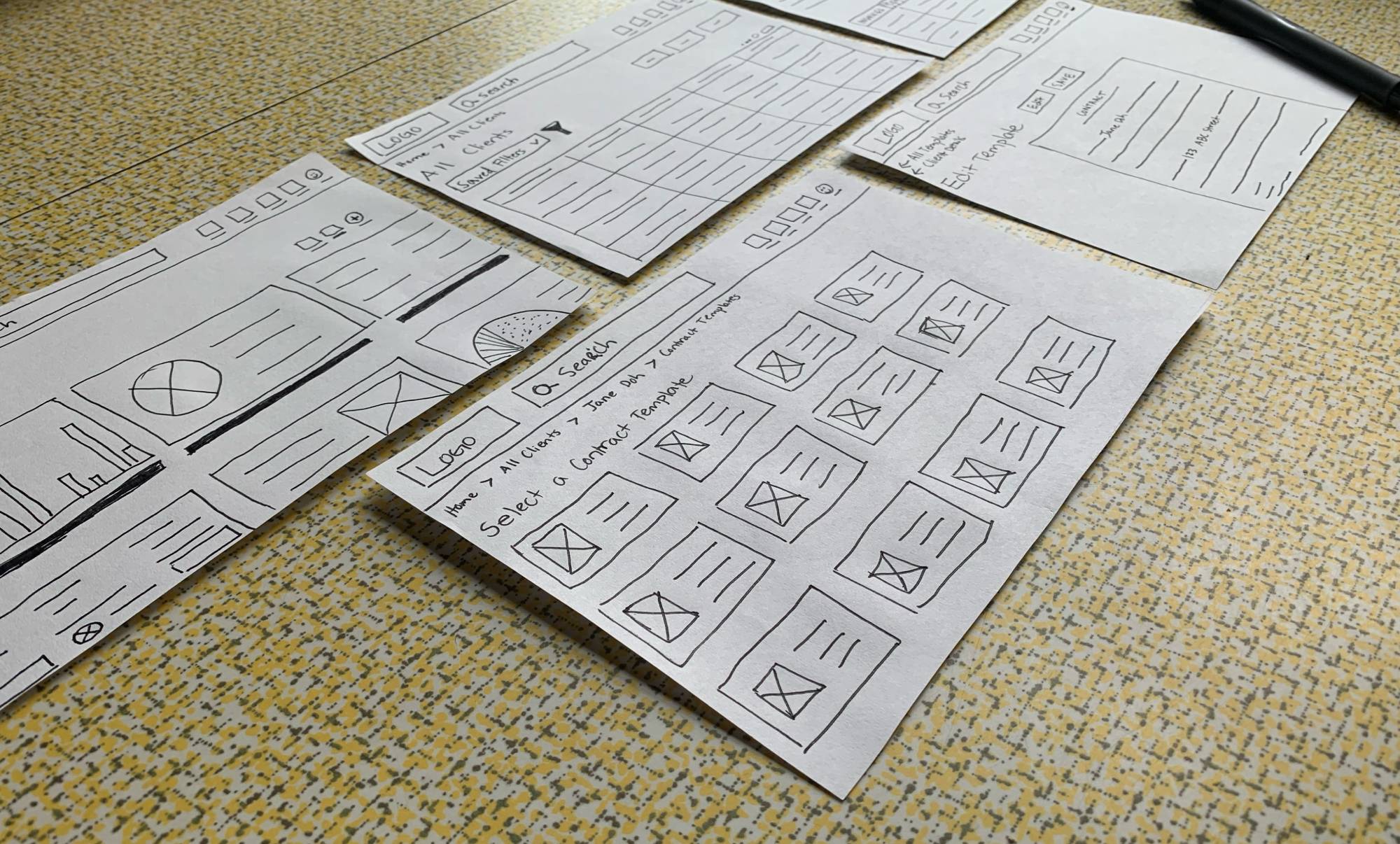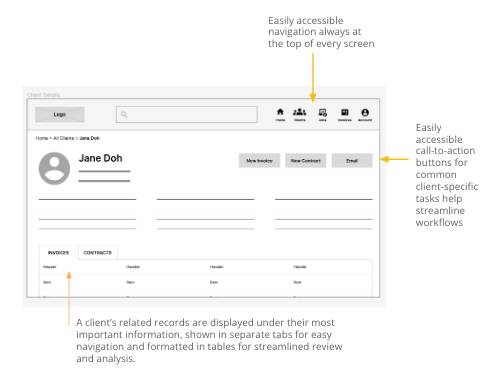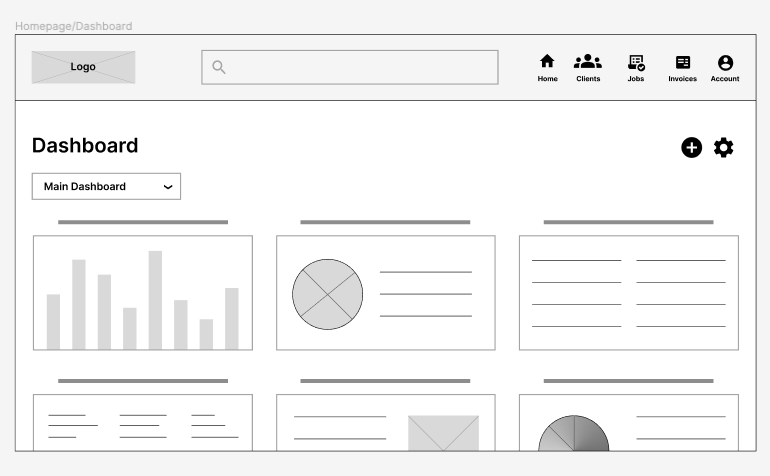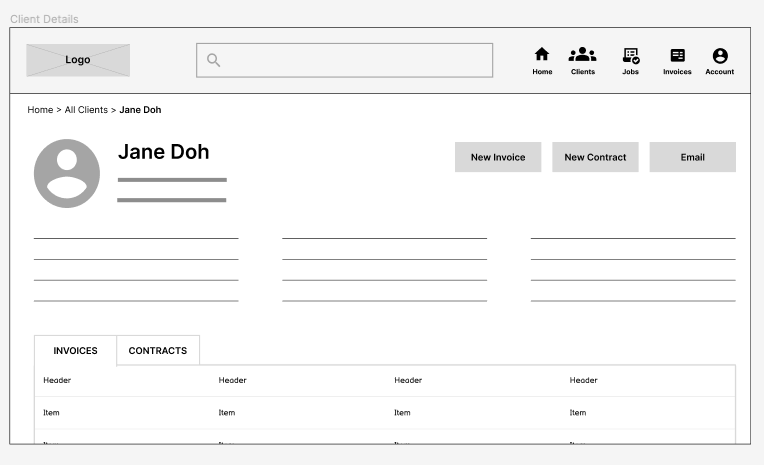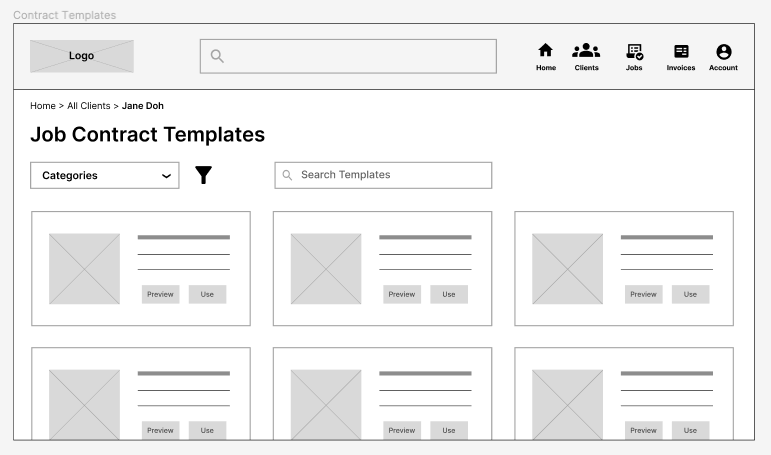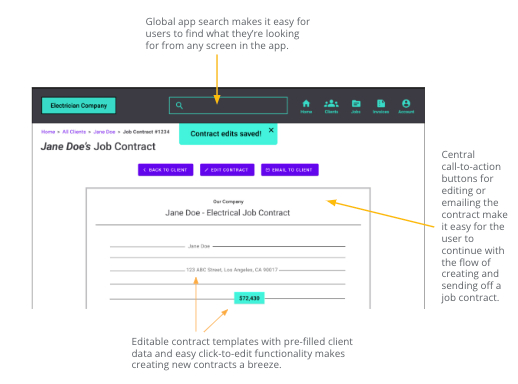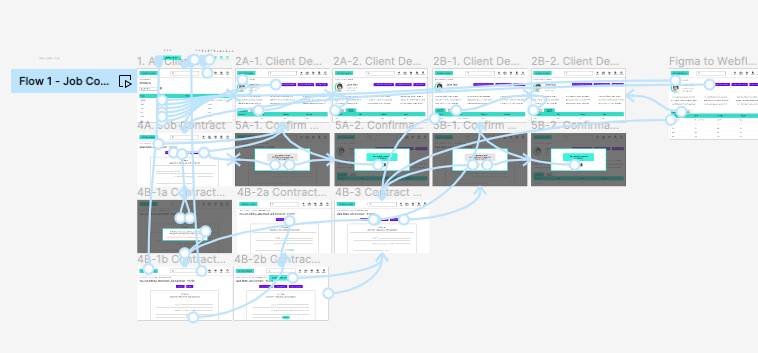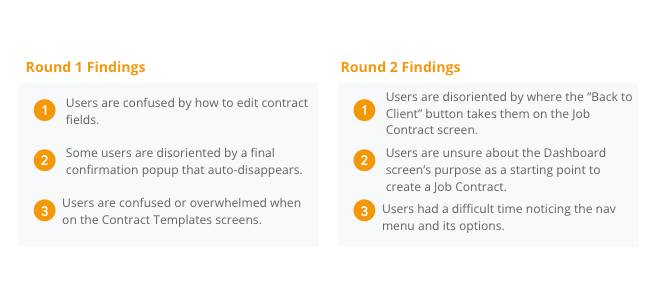Electrician CRM
Summary
View High-Fidelity Prototype on Figma »
View Full Case Study Presentation on Google Slides »
The Electrician CRM, designed in Figma, is a web app concept that provides electrician contractors, business owners, and managers with a business and client management system specifically designed for electrician businesses and employees working in the field.
The Problem:
Popular CRMs and work management software are not designed specifically for electricians, so electrician businesses can end up piecing together processes and working offline, and this can cause errors and delays. This may slow down or prevent business growth, making it difficult to scale and stay competitive.
Target Users:
Electrician contractors, business owners, project managers, and electrician employees
The Goal:
Explore the concept of an Electrician CRM web app that allows users to streamline an electrician business by effectively managing job details, employees, client relationships, internal communications, and workflow automation in one place online.
The aim is to simplify work management and business development for electrician contractors, make working as an electrician more enjoyable, and help electrician businesses and teams meet goals, delight their clients, and increase profits.
Role: UX Designer
Tools: Figma, Figjam
Duration: 8 Weeks, Aug-Oct 2022
Research and Empathizing
Understanding the User
A primary user group identified through research was electrical contractors who own midsize to large electrical companies or manage government departments.
User Pain Points
Inconsistent Procedures
Electrical Contractors feel overwhelmed by managing daily operations and often have inconsistent processes that mean room for more errors and oversights.
Keeping Track of Schedule and Job Details
Electricians in the field are busy and on-the-go and don’t have time to sort through communications to find schedule updates or client info. Jobs close in proximity weren’t scheduled together (missed opportunity to save time and money
Email and Document Management
Communications, billing, and scheduling is often handled through email, calls, and texts so things can get missed, lost, or the wrong version of something is used on a final contract or bill.
Ideation
The ideation phase involved brainstorming and generating concepts for the Electrician CRM app, starting with reviewing notes from my initial research and making a list of features the app should include in order to meet user needs. I moved from there to rapid sketching with a Crazy Eights exercise and paper wireframes.
The initial concept was focused on a single user flow, which was for a user to quickly create a new job contract for a client and email it to them.
Through iterative ideation, I refined concepts and identified the most promising solutions.
My focus was specifically on the following:
- An intuitive interface for a web app
- Easy navigation between the different sections
- A straightforward way to search client records and their related documents
- Contract themes to make it easier for the user to create a new job contract
- Simplicity in emailing a contract to a client
Design
Low-Fidelity
The design phase involved transforming the ideation concepts into tangible visual designs. I began by creating low-fidelity wireframes using Figma to define the app’s information architecture, layout, and flow. These wireframes acted as a blueprint for the subsequent design iterations.
Digital wireframes helped refine the Electrician CRM concept after understanding the various needs of electrician businesses, contractors, and workers through initial user research, empathizing, and ideating.
High-Fidelity
For the high-fidelity mockups, utilizing Google’s Material Design System and creating a sticker sheet helped speed things up. With limited time on this project, I prioritized intuitive navigation, flow, and interactivity, and aimed to move on quickly to a user-testing. Thus, using an established design system for visual design allowed me to accelerate this phase of the project.
Evaluation
I conducted two rounds of usability studies. Findings from the first study helped guide the designs from wireframes to mockups. I synthesized the data, using an affinity diagram to group themes. The second study was done with a high-fidelity prototype and revealed what aspects of the mockups needed refining.
Reflection
Electrician CRM Project: Milestones were achieved in creating a web app tailored for electrical businesses. Future iterations should refine the flow, explore layouts/features, and test prototypes with users to better meet their needs. Iteration focus includes accessibility features for field workers: dictation, text-to-speech, language translation, and customizable personal settings. This project offered insights into empowering electrician business owners, managers, and field workers with efficient workflows for client and work management.
Impact
Users found certain aspects of the Electrician CRM to be more helpful compared to using emails, hard copies, or separate file management systems. The ability to use contract templates that auto-fill with client data streamlined workflows. However, user feedback indicated less enthusiasm for interactivity, visual design, and specific page layouts. Further user research and testing are needed to guide overall design improvements for the Electrician CRM app, ensuring it better serves the needs of electrician businesses.
What I Learned
The Electrician CRM project served as an invaluable introduction to the full UX design process and design thinking methodology. It highlighted the importance of keeping the user at the center of the process and basing decisions on real data to gather feedback and insights. This user-centered approach proved instrumental in creating a product that truly meets user needs. I learned that, despite potentially requiring more time initially, thoroughly following this approach from the beginning ultimately saves time in the long run.
Experiencing the UX design process firsthand reinforced my appreciation for user-centered design and its effectiveness in real-time. Reflecting on the project’s completion, I recognized the significance of iteration in developing a highly functional and polished product that users will continuously rely on.

